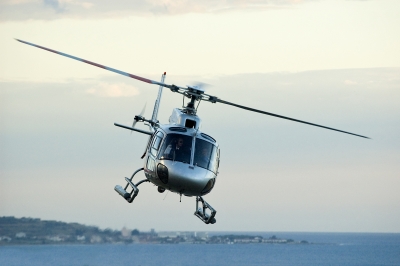
Helicopters rely on the same forces – thrust and lift – that propel planes miles into the sky. And helicopters have wings just like planes, except, in their case, the wings aren’t fixed o the fuselage (which is why planes are also called fixed-wings are on the propellers – or “rotors” – that whirl above the whirlybird. The helicopter’s engine spins the rotors, which thrusts them through the air and creates lift, pulling the helicopter vertically into the air. The pilot can control the shape (or “angle of attack”) of the rotors to control the amount of lift, as well as angle them forward or backward to determine the direction of flight. The smaller tail rotor, meanwhile, counteracts the rapid spin of the main rotor so that the helicopter doesn’t whirl out of control (the tail rotor also controls turns). Balancing these rotor systems takes some serious multitasking skills and hand-eye coordination (helicopters are trickier to fly than airplanes), but then “rotary-wing aircraft” are much more nimble in the air, able to take off vertically, hover, and dart in any direction.
Picture Credit : Google
